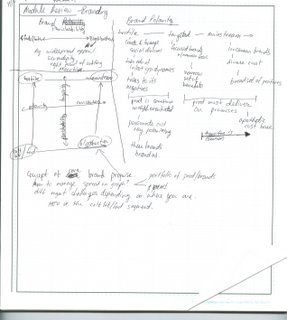Branding as applied to Social Organizations
During the branding review on Friday I had an insight into what is happening with several of the organizations I am involved with outside of school. One of these organizations is the Hindu Students Council (HSC). HSC is a nation wide organization (with chapters in over 80 universities) that focuses on trying to unite and educate Hindu students as they attempt to learn about themselves and understand their own identity in college.
HSC brands itself as a very mainstream brand and tries very hard to appeal to everyone and makes many statements to that regard. It wants to build consensus on every issue both within its leadership team, the larger member base, and do nothing that could conceivably offend anyone in the larger public. This brand positioning was not something that was consciously thought about and strategically created…it is a result of the fact that these are things that are deeply ingrained in the psyche of its leadership team. While the positioning is actively managed, no one things of this as brand positioning and so, the organization is a bit hap-hazard in its approach to the issues it tries to tackle and is surprised to not find a great deal of support from its members.
One of the results of this branding is the fact that its member base is fairly apathetic to the causes it picks up. Very few people are willing to get up and be an activist. However, this is something that the leadership team struggles with on a regular basis. How do they motivate and get their members more involved while maintaining the friendly, non-hostile environment. While they don’t think about it this way, in essence, the problem is how to they get HSC to go from a mainstream brand (and apathetic membership) to a brand that has a very enthusiastic, activist member base (with energy similar to that of followers of hostile brands).
We normally think of branding as something that companies do with products and product portfolios. However, the concept is equally applicable to non-profit & social organizations. In this case the customers are really an organization’s members. By mapping these concepts onto this world, we gain a new way to analyze organizational problems and find solutions. For example, to make members less apathetic, we can change an organization’s branding to be less main-stream. This action, involves a trade-off however, reduced membership count, but increased number of active members instead of a larger membership count, but fewer number of active members.
There is a continuum between extreme hostility and mainstream. By understanding where the organization positions itself, it can explore where it can move. It might even be possible to move a little bit on the continuum without loosing any of the current members. In short, for an organization that hasn’t thought of itself in these terms, it is very important for it to understand where on the continuum it positions itself in order to understand what its options are. Also, by knowing where the organization is, the leadership team can predict what will happen based on actions that move the group along that continuum.
